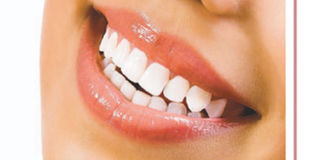Myths and realities through an oral health window - 2

Did you know that decay can also occur when teeth look and feel normally fine. PHOTO | FILE
What you need to know:
- Oral health involves diagnosis, prevention and treatment of diseases, disorders and conditions of your teeth and gums.
Getting to know the right information and acting upon those choices can keep you healthy for a lifetime, such as your oral health.
Oral health involves diagnosis, prevention and treatment of diseases, disorders and conditions of your teeth and gums.
There are commonly held myths among different age groups who share the same mindset regarding dental health. Let’s debunk some of them in the second part of the ‘oral health myths and realities’ series.
Myth 1: Everyone should have a dental check-up every six months.
Fact
For many people, every six months is appropriate. Some people require more frequent check-ups and others less frequent check-ups.
It depends on one’s oral health and risk for oral disease(s). Your oral health provider can determine how often you should visit.
Myth 2: If there is no pain, the teeth are fine.
Fact
Not always the case!
Dental decay, infection and fractured teeth are often associated with dental pain and discomfort. But that isn’t the case for every case.
Sometimes dental decay penetrates through the hard layer of enamel and the softer inner dentin layer, before any discomfort occurs.
Decay that has gone through the harder tissues of a tooth to the delicate pulp will require root canal therapy if the tooth has to be saved.
However, if the decay is diagnosed in its early stage, a small filling would have stopped the decay.
Not being in pain does not mean the teeth are healthy: that’s why regular oral health checkups and x-rays are important for detecting dental concerns without symptoms.
Myth 3: Spaces or gaps in teeth lead to cavities.
Fact
Bigger spaces or gaps are easier to keep clean as long as food doesn’t get stuck in the gap when one eats and deposit bacteria, wide spaces are less likely to decay.
Keep an eye on small gaps, though. Food may get stuck there and lead to cavities if it’s not cleaned out.
Myth 4: Only children are prone to dental decay and cavities.
Fact
Dental decay and cavities are not determined by age; they will affect the teeth at any age or stage of life.
Children may have more cavities due to lack of dexterity in brushing their teeth – but cavities can be diagnosed in a 50-year-old or 35-year-old person, especially if they have slacked-off their oral hygiene practices.
Effective brushing and flossing is the best cavity prevention – and an understanding that certain medications and life-style choices increase the risk of developing cavities.
Strong relationship with a tooth brush, dental floss and low frequency of sugary snacks are number one defense against tooth decay.
Myth 5: Brush teeth immediately after eating.
Fact
This thought should be dropped from the routine.
As tempting as it may be to grab the toothbrush and scrub away at the teeth straight after a meal to get rid of any food particles, this can only be detrimental to the dental health as it can do more harm than good.
Brushing within 30 minutes of finishing a meal can weaken tooth enamel, especially if one has consumed anything acidic such as oranges, grapefruit and lemons or even if one drank anything acidic.
Instead, one may chew sugar-free gum because it stimulates saliva flow, cleans the mouth of food debris and neutralises plaque acids.
When cleaning the teeth a little later, try not to be too aggressive with the brushing.
Far better to invest in an electrical toothbrush that scientists have proved is a better, kinder option for the teeth.




